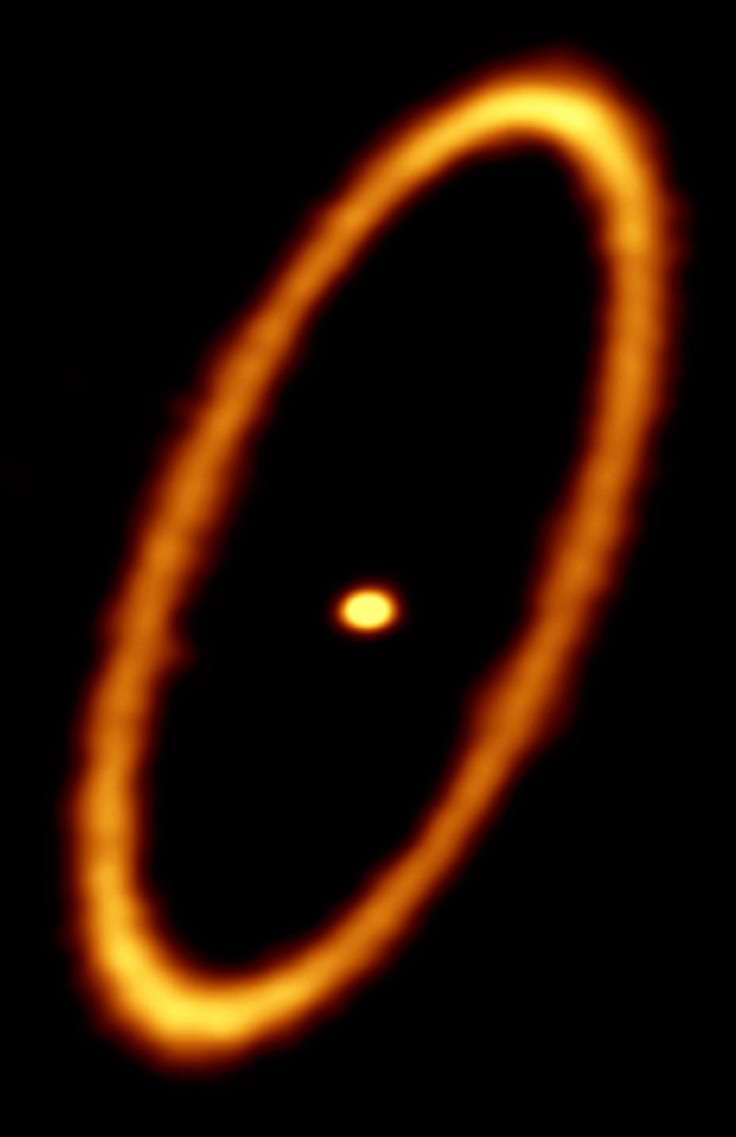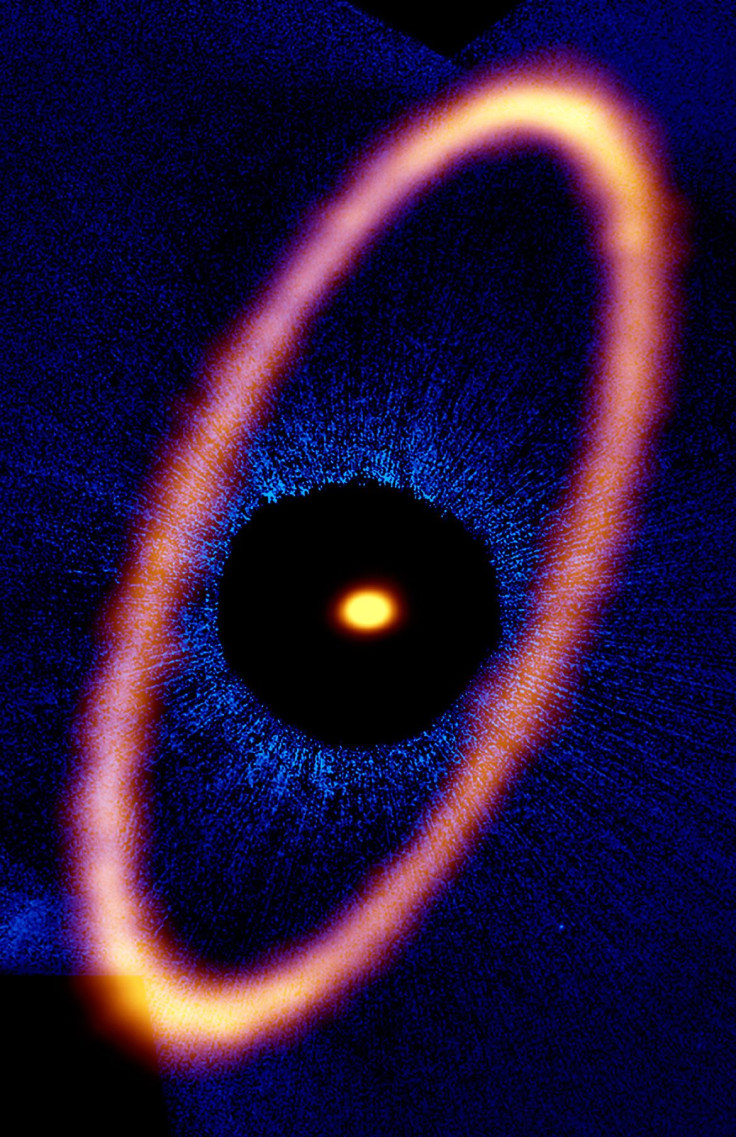ALMA Sees Ring Of Icy Debris Around A Young Star System 25 Light-Years Away

A young star system about 25 light-years away from Earth has a well-defined band of icy rubble and gas around it, which is likely a result of exocomets colliding into each other near the edges of the system. That band, in all its striking glory, was imaged along with the planetary system using the Atacama Large Millimeter/submillimeter Array (ALMA) of radio telescopes in Chile.
ALMA had first observed dusty debris surrounding the young star Fomalhaut in 2012, when the telescope was still being built. It had seen only half the ring that time, but the images released Thursday by the National Radio Astronomy Observatory are “the first complete millimeter-wavelength image of the ring of dusty debris” around the star.
Read: ALMA Spots Explosive Star Formation 1,350 Light-Years Away
Fomalhaut, whose mass is about twice that of the sun, and the planets that orbit it are only about a tenth as old as our solar system, having been formed around about 440 million years ago. The system is one of the score or so whose planets have been imaged directly, instead of being inferred through indirect means. The band of icy dust seen in the ALMA image is about 20 billion kilometers (about 12.5 billion miles) away from the star at its center, and 2 billion kilometers wide across its circular length. It is likely produced as a result of the gravitational influence of the planets in the system.

“ALMA has given us this staggeringly clear image of a fully formed debris disk. We can finally see the well-defined shape of the disk, which may tell us a great deal about the underlying planetary system responsible for its highly distinctive appearance,” Meredith MacGregor, an astronomer at the Harvard-Smithsonian Center for Astrophysics in Cambridge, Massachusetts, and lead author on one of two papers accepted for publication in the Astrophysical Journal describing these observations, said in a statement accompanying the images.
By focusing on specific signals that are emitted naturally by molecules in space, researchers found large amounts of carbon monoxide in the same place as the debris disk. This led them to consider similarities with our own solar system, and the comets within it.
“The relative abundance of carbon monoxide plus carbon dioxide around Fomalhaut is about the same as found in comets in our own solar system. This chemical kinship may indicate a similarity in comet formation conditions between the outer reaches of this planetary system and our own,” Luca Matrà from the University of Cambridge, United Kingdom, and lead author on the team’s second paper, said in the statement.
The researchers think the gas is either released due to the continuous collisions with comets or the result of a large, massive impact between supercomets hundreds of times more massive than Hale-Bopp. The debris disk also indicates the Fomalhaut system could be going through its own version of the Late Heavy Bombardment, during which time — about 4 billion years ago — planets in our solar system, including Earth, were routinely struck by asteroids and comets that were left over from its formation.
Read: Celestial Spirals Surround A Binary Star System, ALMA Finds
The ALMA observations of Fomalhaut also proved for the first time a phenomenon called “apocenter glow,” which was first predicted in 2016 by Margaret Pan, a scientist at the Massachusetts Institute of Technology in Cambridge. The material in the elongated, dusty disk travels slower when it is far from the star, and slowing dust piles up, creating a denser concentration in parts of the disk that are farther from the star. The dense regions of the disk appear brighter to ALMA, as seen in millimeter-wavelength emissions.
© Copyright IBTimes 2024. All rights reserved.




















